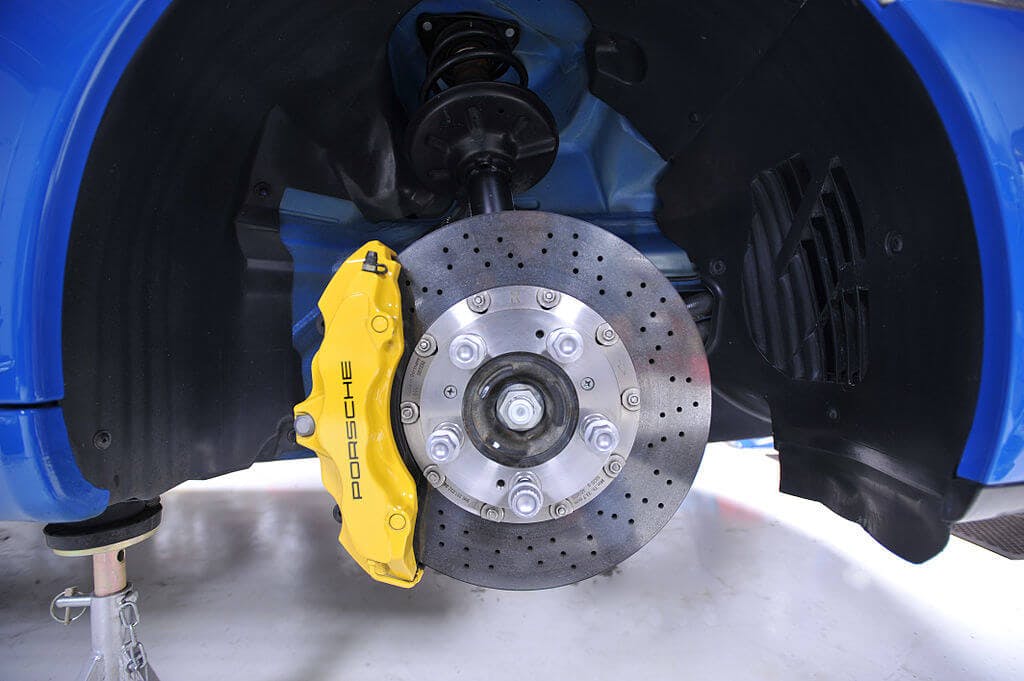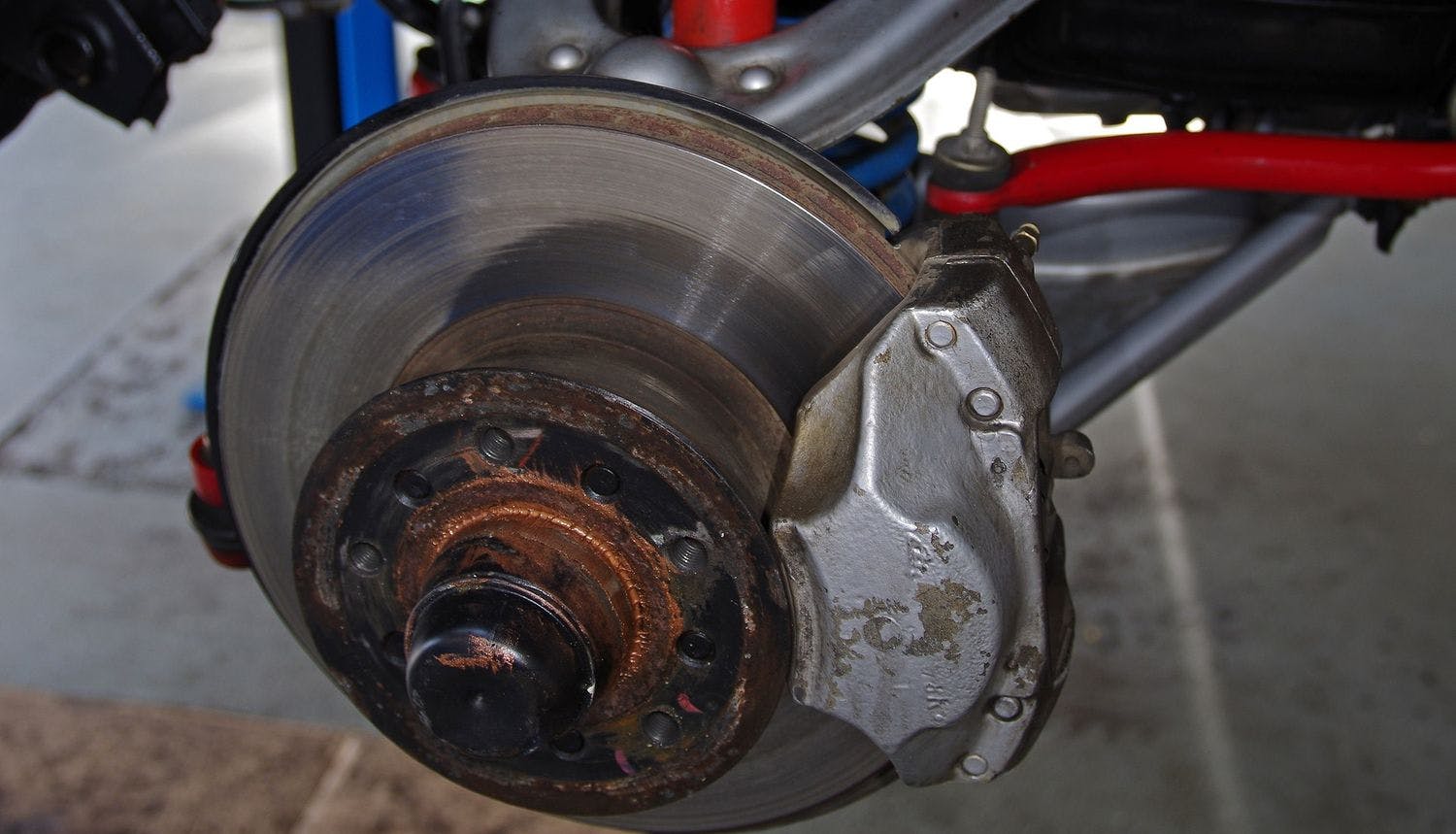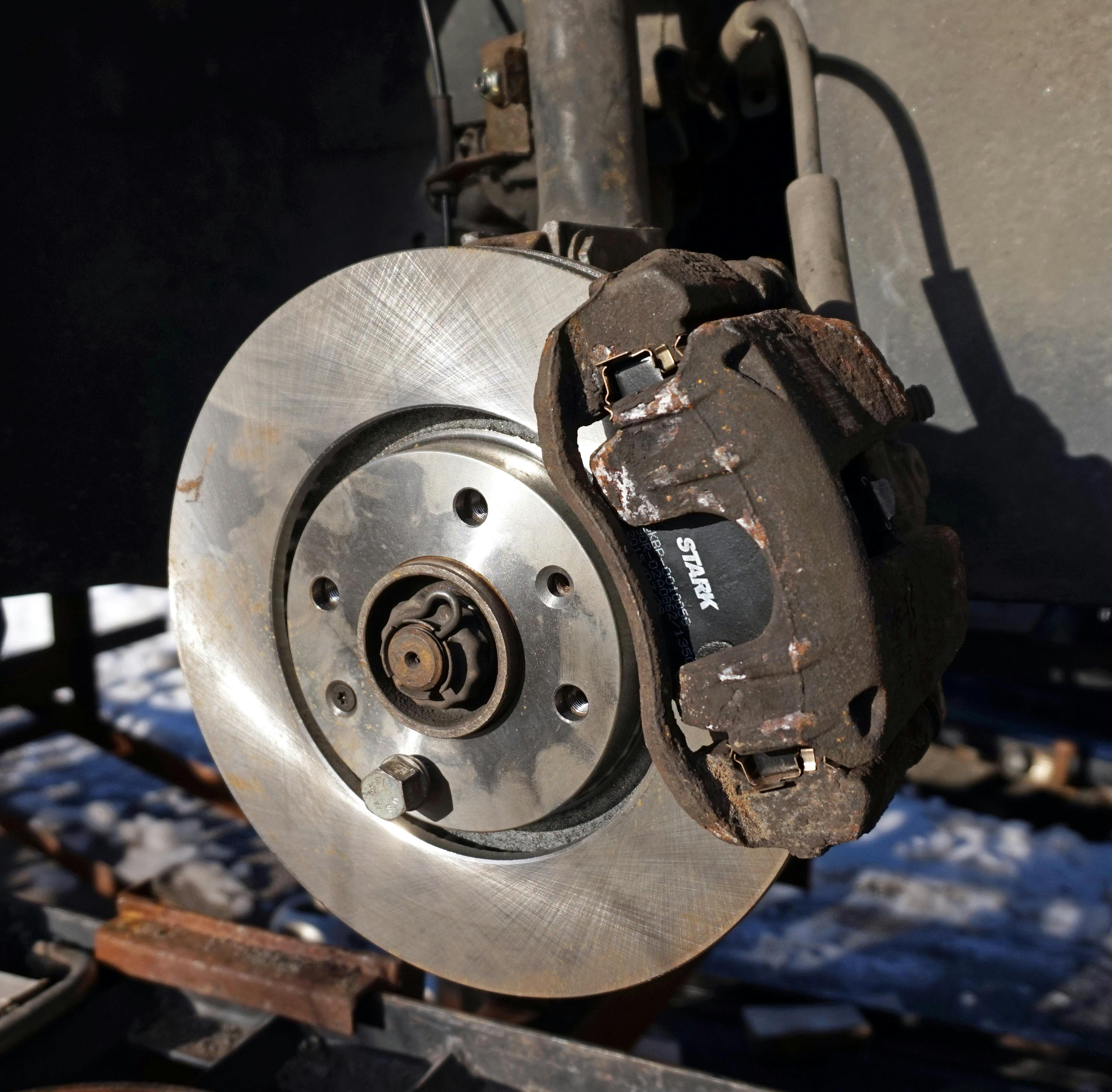Brake Pads: How do they work, and which are the best?

Brake pads are part of disc brakes, and their task is to slow down the car safely under all circumstances. Brake pads are one of the basic components of the braking system of any vehicle.
In this article, we will discuss brake pads' meaning, function, and types. In addition, we will compare different types of brake pads and shed light on their advantages and disadvantages.
Indholdsfortegnelse
How do brake pads work?
The brake pads are positioned using the brake caliper so that their friction surfaces face the brake disc. When you press the brake pedal in a vehicle, hydraulic pressure is applied to the brake pads, which then come into contact with the brake rotors.

Car Braking System: How does it work?
The result is friction, which in turn slows the car down. Thus, with the help of friction, the brake discs convert the car's kinetic energy into thermal energy. However, this heat and friction cause gradual wear of the brake pads, as the material is worn away from the brake pads each time you apply the brakes.

Disc brakes: What are their pros and cons?
When the pads wear down, the braking distance increases, making it difficult to stop the vehicle. Therefore, regular maintenance and replacement of brake pads are necessary to prevent accidents.
What are brake pads made of?

Brake pads consist of steel support plates with a friction material bonded to the surface that faces the brake discs.
High demands are placed on the material from which the brake discs are made, and it must:
Withstand the high temperatures that occur during the conversion of kinetic energy into thermal energy due to braking
Resist moisture - it must withstand at least temporary exposure to water
Ensure approximately the same friction levels during cooling/drying - cooling after high temperatures and drying in contact with water
Have low noise - the material must not cause excessive noise during friction (braking).
Have a coefficient of friction low enough to prevent the wheels from locking up but at the same time high enough to provide sufficient stopping power - the coefficient of friction for brake pad material ranges between
0.3and0.5
Due to its resistance to high temperatures, asbestos was used in the past, but due to its toxicity, it was replaced by aramid fibers.
Types of brake pads

There are currently four main compounds that brake pads can be made from. Car manufacturers recommend a specific type of brake pad for a specific vehicle, but driving style, usage, and personal budget are key.
When choosing brake pads, it is, therefore, good to know the advantages of specific types and choose the most suitable ones based on your driving style and vehicle.
1. Organic / non-metallic brake pads
They are made of organic materials such as rubber, fibers, resins, or synthetic substances combined into a composite in aramid, PAN, etc. Brake pads made of organic or synthetic materials are softer and gentler on the brake rotors and produce less noise than other brake pads, but they wear out faster.
In addition, they are less resistant to high temperatures and may overheat under greater load.
2. Semi-metallic brake pads
In the case of these brake discs, synthetics mixed with a certain proportion of metals are used for production. These brake pads are harder, more fade-resistant, and last longer than organic/non-metallic ones. However, their disadvantage is greater wear on the brake discs, which must be replaced more often.
3. Metallic brake pads

These brake pads are made of metal fibers, copper, and steel wool. They are very durable and provide excellent stopping power. However, they produce more dust and noise than other brake pads and are not gentle on the brake discs.
4. Ceramic brake pads
These brake pads are made of ceramic fibers connected with particles of copper, which have a high thermal conductivity. They are a compromise between metallic and organic/synthetic brake pads, as they are more durable than metallic (they have a long life) and, simultaneously, more resistant to wilting than organic/synthetic.
Compared to other types of brake pads, they are extremely quiet. On the contrary, their disadvantage is the high price.
Comparison of brake pads
When choosing the best brake pads for your car, you need to consider several factors, such as the type of car, driving conditions, and personal preferences. Organic brake pads are best for everyday driving, while ceramic and metal brake pads are ideal for sports cars.
Ceramic brake pads are the most durable and produce less dust, making them a popular choice for luxury cars. Metallic brake pads provide the best stopping power and are suitable for heavy vehicles such as trucks and SUVs.
Brake system wear | Braking power | Noise | Price | |
|---|---|---|---|---|
Organic/Synthetic | Low | Low | Low | $ |
Semi-metallic | Medium | High | Medium | $$ |
Metallic | High | Very High | High | $$ |
Ceramic | Very Low | Medium | Very Low | $$$ |
Conclusion
Brake pads are critical components of any vehicle's braking system equipped with disc brakes. Proper maintenance and replacement of brake pads are essential to ensure optimal performance and prevent accidents.